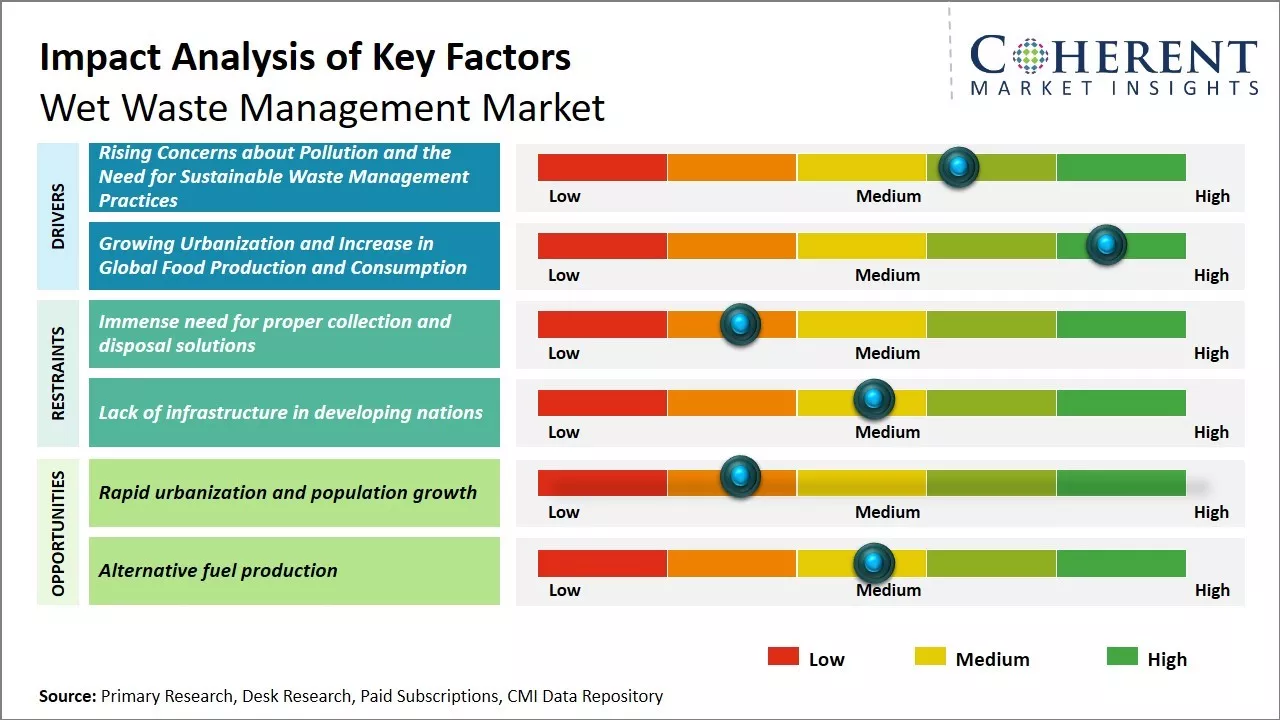The global wet waste management market is estimated to be valued at USD 134.78 Bn in 2025 and is expected to reach USD 150.72 Bn by 2032, growing at a compound annual growth rate (CAGR) of 1.6% from 2025 to 2032.

To learn more about this report, Request sample copy
Wet waste management practices are evolving with increases in urbanization and sustainability initiatives. There is a growing focus on efficient waste collection and segregation methods to increase recycling and reduce dumping in landfills. Advancements in digestion technologies are allowing for the conversion of food waste into useful byproducts like biogas and fertilizers. New regulatory pushes and policies and rising awareness among citizens are encouraging municipalities to adopt modernized waste management systems. The long term trend reflects a transition towards a circular economy model with maximized resource recovery from wet waste streams.
Rising Concerns about Pollution and the Need for Sustainable Waste Management Practices
Wet waste, such as food scraps and green waste, accounts for a large portion of garbage sent to landfills and incinerators every year, where they take up valuable space and release greenhouse gases as they break down. However, more people are realizing the harmful environmental impact of sending biodegradable materials to landfills. The decomposition of wet waste in anaerobic conditions at landfills produces methane, a potent greenhouse gas that is many times more damaging to the climate than carbon dioxide. There is also the issue of valuable resources being wasted when food scraps and yard trimmings are not composted or converted into renewable energy. More countries and communities are recognizing the need to adopt sustainable waste management solutions to deal with wet waste in an environmentally friendly manner through options like composting, anaerobic digestion and waste to energy. Strict regulations are being put in place in many parts of the world to mandate source separation of wet waste and ban biodegradable materials from landfills. Consumer demand is also increasing for sustainable waste management practices and eco-friendly disposal options. As ecological concerns rise up the global agenda, more investments will flow into developing infrastructure and technologies for treating wet waste in a manner that protects the environment.
Joining thousands of companies around the world committed to making the Excellent Business Solutions.
View All Our Clients